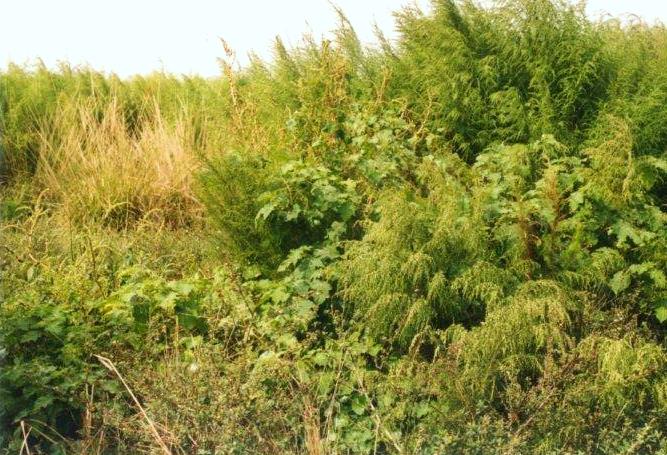
Herbicides can be used to control the weeds, but without good fertility and a healthy stand of grass, the weeds will return. Photo Credit: Doug Mayo
There have traditionally been few options for controlling weeds in pastures. In the recent past, 2,4-D was the standard herbicide for broadleaf weeds. Though 2,4-D is a great herbicide, it is weak on woody perennials and completely ineffective on grass weeds. Therefore, your pasture weed management programs consisted of few herbicides, mowing, burning, spot-treatments, managed grazing, hand-rouging and so on. However, a tremendous number of herbicides have entered the pasture market in the past 10-15 years that are highly effective and reliable on numerous species. Additionally, many effective herbicides are no longer under patent, resulting in several low cost products in the marketplace. These factors make it cheaper and easier to use herbicides to control weeds in pastures than it was in the past.
There are pros and cons in every situation and pasture weed management is no different. As herbicides become more affordable, we use them more often – to the point of relying on them almost exclusively to control weeds. This is a problem since weed management should be a system where herbicides are “one” way, not “the” way to control unwanted plants. As we become reliant on herbicides, we often begin to neglect essential pasture management procedures – one of which is soil fertility.
A healthy, actively growing stand of grass is THE best form of weed control that can be had, but for this to occur, we must ensure that our soil conditions will support this active and vigorous growth. If soil pH is not at the correct level, grass growth declines. Unfortunately, soil pH often changes slowly and even when it gets outside the proper range, pasture grasses will often continue to persist. So, since there is no over-night dramatic change in grass health due to pH, we can overlook the impact that pH is having. It is essential to keep pH at the proper level. If it is not, then grass growth declines because many soil nutrients are less available for uptake. When grass growth declines, weeds will invade.
It is also essential to closely monitor soil nutrient levels. Regularly cutting a hay crop, with time, results in removal of soil nutrients. Considering the predominantly sandy soils of Florida don’t hold a lot of nutrients, depletion can occur fairly quickly. Some will say that since hay fields regularly receive fertilizer, this isn’t an issue, but is the fertility program keeping up with removal? What about micro-nutrients? Without the proper nutrient balance, again, grass growth will decline and weeds will invade.
If you haven’t been regularly sampling soils to monitor nutrient levels, we recommend that you start. Many fields will likely be in great shape and require no action. But if certain elements are getting low, you need to know the situation so a soil fertility plan can be developed.
Remember this: herbicides are excellent tools to manage weeds, but you will never spray your way out of a soil fertility problem. If soil conditions are poor and grass growth is declining, no amount of herbicide will fix this problem. Yes you may control the weeds that are present, but if the grass doesn’t fill in and compete quickly, new weeds will show up as fast as you can spray.
For more information on this topic, please refer to the following UF/IFAS publications:
Weed Management in Pastures and Rangeland – 2013
Fertilizing and Liming Forage Crops
- Friday Feature:Ford Farms Featured on Local News Story about Peanuts - October 24, 2025
- September 2025 Weather Summary and Last Quarter Outlook - October 10, 2025
- What to See at the 2025 Sunbelt Ag Expo – October 14-16 - October 10, 2025
